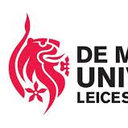Inflammation disrupts the LDL receptor pathway and accelerates the progression of vascular calcification in ESRD patients.
Keywords
Abstract
BACKGROUND
Chronic inflammation plays a crucial role in the progression of vascular calcification (VC). This study was designed to investigate whether the low-density lipoprotein receptor (LDLr) pathway is involved in the progression of VC in patients with end-stage renal disease (ESRD) during inflammation.
RESULTS
Twenty-eight ESRD patients were divided into control and inflamed groups according to plasma C-reactive protein (CRP) level. Surgically removed tissues from the radial arteries of patients receiving arteriovenostomy were used in the experiments. The expression of tumour necrosis factor-α (TNF-α) and monocyte chemotactic protein-1 (MCP-1) of the radial artery were increased in the inflamed group. Hematoxylin-eosin and alizarin red S staining revealed parallel increases in foam cell formation and calcium deposit formation in continuous cross-sections of radial arteries in the inflamed group compared to the control, which were closely correlated with increased LDLr, sterol regulatory element binding protein-2 (SREBP-2), bone morphogenetic proteins-2 (BMP-2), and collagen I protein expression, as shown by immunohistochemical and immunofluorescent staining. Confocal microscopy confirmed that inflammation enhanced the translocation of the SREBP cleavage-activating protein (SCAP)/SREBP-2 complex from the endoplasmic reticulum to the Golgi, thereby activating LDLr gene transcription. Inflammation increased alkaline phosphatase protein expression and reduced α-smooth muscle actin protein expression, contributing to the conversion of the vascular smooth muscle cells in calcified vessels from the fibroblastic to the osteogenic phenotype; osteogenic cells are the main cellular components involved in VC. Further analysis showed that the inflammation-induced disruption of the LDLr pathway was significantly associated with enhanced BMP-2 and collagen I expression.
CONCLUSIONS
Inflammation accelerated the progression of VC in ESRD patients by disrupting the LDLr pathway, which may represent a novel mechanism involved in the progression of both VC and atherosclerosis.






